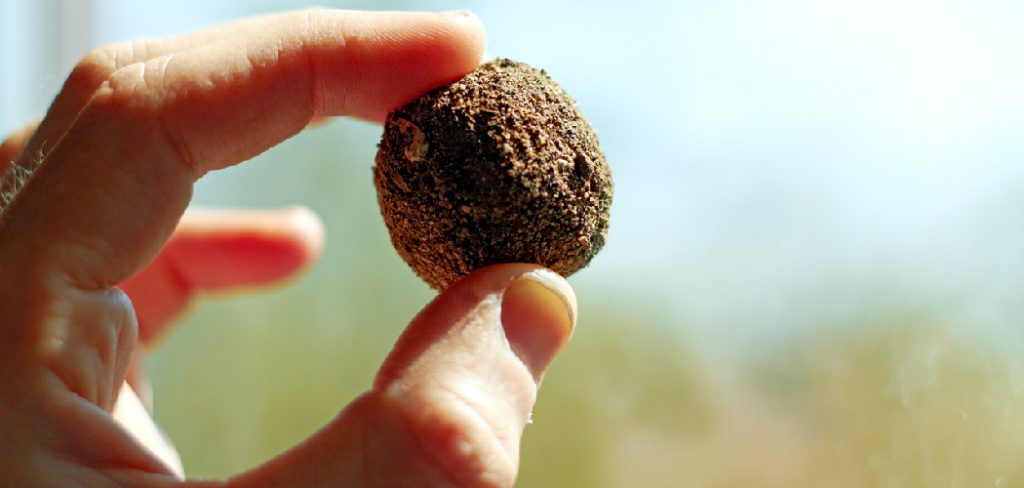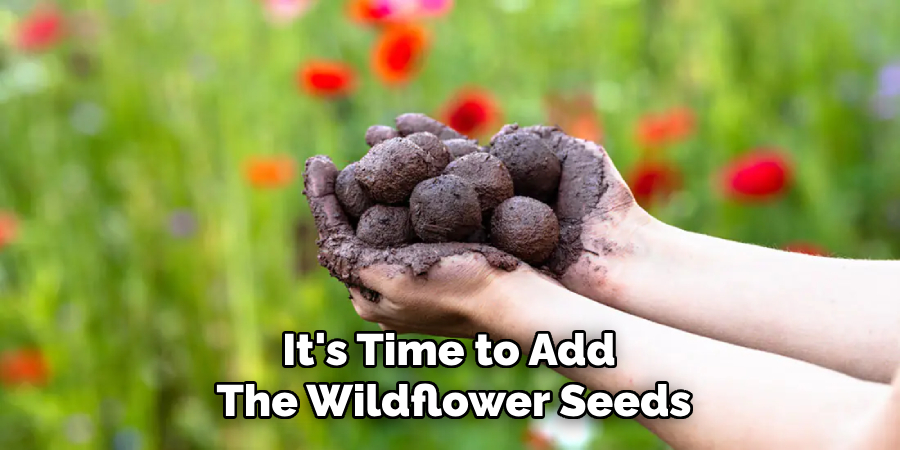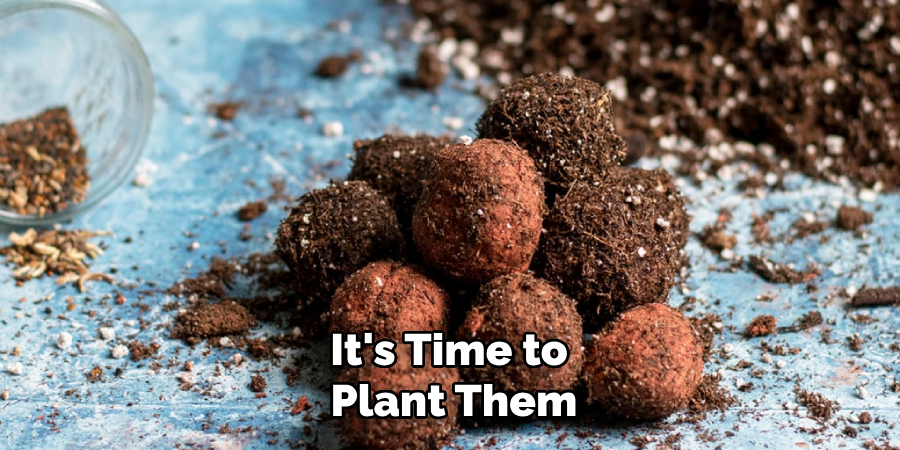Wildflower seed balls are an easy and eco-friendly way to grow beautiful wildflowers in your garden or local green space. These small, nutrient-packed balls protect seeds and provide them with the vital resources they need to germinate and grow.

Perfect for beginners and seasoned gardeners alike, seed balls are great for promoting biodiversity, supporting pollinators like bees and butterflies, and adding stunning colors to any area. Best of all, they’re fun to make and can be a great project for kids and adults to enjoy together! In this article on how to make wildflower seed balls, we’ll guide you through the steps to create your own unique seed balls and share some tips for successful growth.
Materials
To make wildflower seed balls, you will need the following materials:
Dry Clay Powder
This can be found at most art supply stores or online. Make sure to check the label and choose a clay powder that is safe for the environment.
Compost or Potting Soil
This will provide nutrients for your seeds to grow.
Wildflower Seeds
Choose a variety of wildflower seeds that are native to your region, as they will be more likely to thrive in your area’s climate and soil conditions.
Water
This will help bind all the ingredients together.
Large Bowl
Use a large bowl to mix all of your materials together.
Measuring Cups
You will need measuring cups to ensure you have the right ratio of ingredients for successful seed ball growth.
Gloves (Optional)
It may be easier to mix the ingredients together with your hands, but if you prefer not to get your hands dirty, gloves are a good option.
7 Steps on How to Make Wildflower Seed Balls
Step 1: Start by Measuring Out Your Clay Powder
Begin by measuring out the dry clay powder into your mixing bowl or bucket. Use approximately 2 parts clay powder as the base of your mixture.
The clay serves as the binding agent, holding the seed balls together and protecting the seeds until they’re ready to grow. Ensure the amount of clay is proportional to the other ingredients to create a smooth and workable mixture.

Step 2: Add Your Soil
Next, add 5 parts of soil to the mixing bowl or bucket with the clay powder. The soil provides essential nutrients for the seeds and helps create a suitable growing environment when the seed balls are eventually planted.
Ensure the soil is free of large debris or rocks, as this could hinder the formation of the seed balls. Mix the soil thoroughly with the clay powder to create an even and consistent texture.
Step 3: Mix in the Wildflower Seeds
Now, it’s time to add the wildflower seeds to your mixture. Use 1 part seeds for every 10 parts of the combined clay and soil mixture. Sprinkle the seeds evenly over the mixture, ensuring they are well-distributed to promote balanced growth once planted.

Gently mix the seeds into the clay and soil, taking care not to crush or damage them. The seeds should be evenly integrated throughout the mixture but still identifiable to ensure proper seed ball formation in the next step.
Step 4: Incorporate Water
Slowly add water to the seed, clay, and soil mixture. Begin with small amounts to avoid oversaturating the mixture, gradually working it in until the texture resembles damp cookie dough. The mixture should be moist enough to hold its shape when pressed, but not so wet that it becomes sticky or difficult to handle.
If the mixture feels too dry, add more water sparingly, and if it’s too wet, you can balance it by mixing in a bit more soil or clay. Once the correct consistency is achieved, you’re ready to move on to the next step of forming the seed balls.
Step 5: Plant Your Seeds
Once your seed balls are complete, it’s time to plant them! Choose a suitable location with the right conditions for the seeds you’ve used. Ideally, the area should have good sunlight and access to water, although seed balls are designed to grow in less-than-ideal environments as well. Scatter them on the soil, gently pressing them into the ground without burying them too deep.

Nature will take care of the rest—rain will help break down the seed balls, allowing the seeds to germinate and grow. Be patient, as germination times will vary depending on the seed type and environmental conditions.
Step 6: Monitor and Care for Your Seedlings
Once your seeds begin to germinate and sprout, it’s important to monitor their progress and provide care as needed. Keep an eye on the young plants to ensure they are receiving sufficient water, especially during dry periods.
If weeds start to grow near your seedlings, gently remove them to reduce competition for nutrients and sunlight. Protect your seedlings from potential threats such as pests or animals, and, if necessary, consider adding a natural barrier to safeguard their growth. With consistent care and attention, your seedlings will gradually flourish into healthy plants.
Step 7: Enjoy Your Wildflower Garden
In just a few weeks, you will start to see your wildflowers bloom! Sit back and enjoy the beautiful colors and varieties that nature has provided for you. Remember to continue caring for your garden by watering it regularly and removing any weeds that may appear.

Following these steps on how to make wildflower seed balls will not only create a stunning and natural-looking garden, but it will also help to support the local ecosystem by providing food and shelter for pollinators. So go ahead and make your own seed balls, and watch as your wildflower garden thrives! Don’t forget to share your beautiful garden with others and inspire them to do the same. Happy gardening!
Planting and Using Wildflower Seed Balls
Once your wildflower seed balls are ready, planting them is both simple and rewarding. Choose an area with plenty of sunlight and soil that is not too compacted. Scatter the seed balls on the ground, allowing some space between each one for the flowers to grow. There’s no need to dig or bury them; the natural weather conditions, like rain, will help the seed balls settle into the soil.
After planting, ensure the area receives sufficient water, especially during dry spells, to help the seeds germinate. Over time, you’ll start to see vibrant wildflowers emerge, creating a lively and colorful space.
These flowers will not only beautify your garden but also attract pollinators such as bees, butterflies, and birds, further enriching local biodiversity. Wildflower seed balls are a great way to bring nature closer to home and contribute to a healthier environment.
Additional Tips
- You can also add some organic fertilizer or compost to the soil before planting for added nutrients.
- Consider mulching around your wildflowers as this will help retain moisture in the soil and control weed growth.
- If you live in an area with severe winters, it is recommended to plant wildflowers in the fall so that they can establish their roots before winter sets in.
- Keep an eye out for any pests or diseases that may affect your wildflowers and address them promptly.
- You can also attract pollinators by providing a water source such as a small bird bath or shallow dish filled with water.
- Consider adding some native grasses to your wildflower garden as they provide habitats for various insects and birds.
- Deadhead your wildflowers regularly to encourage more blooms throughout the season.
- Lastly, don’t be afraid to experiment and have fun with your wildflower garden! Mix different species and colors for a diverse and visually appealing display.
Frequently Asked Questions
Q: Can I Plant Wildflowers in Any Type of Soil?
A: Wildflowers can thrive in various types of soil, but they prefer a well-drained and nutrient-rich loamy soil. Adding organic matter such as compost, can improve the quality of the soil for your wildflowers.
Q: How Often Do I Need to Water My Wildflower Garden?
A: It depends on the weather and soil conditions, but generally, you should aim to keep the top 1-2 inches of soil moist. However, be careful not to overwater as this can lead to root rot.
Q: Do I Need to Fertilize My Wildflowers?
A: If you have chosen native wildflowers that are adapted to your region’s soil, then fertilizing may not be necessary. However, if you notice poor growth or yellowing leaves, you can use a balanced organic fertilizer in early spring.
Q: Can I Plant Wildflowers in Containers?
A: Yes, wildflowers can be planted in containers as long as the container is large enough and has good drainage. Use a potting mix specifically designed for containers and water regularly to keep the soil moist.
Conclusion
Planting wildflowers is a rewarding way to enhance the beauty of your space while supporting local ecosystems. Whether you are planting directly in the ground or in containers, choosing native species and providing proper care ensures vibrant growth and thriving blooms.
With a little effort and attention, you can create a stunning wildflower garden that benefits both you and the environment. Thanks for reading this article on how to make wildflower seed balls.
About
Jennifer Branett is a distinguished figure in the world of Garden design, with a decade of expertise creating innovative and sustainable indoor solutions. His professional focus lies in merging traditional craftsmanship with modern manufacturing techniques, fostering designs that are both practical and environmentally conscious. As the author of garden, Jennifer delves into the art and science of garden-fix, inspiring artisans and industry professionals alike.
Education RMIT University
(Melbourne, Australia) Associate Degree in Design (Jennifer Branett) Focus on sustainable design, industry-driven projects, and practical craftsmanship. Gained hands-on experience with traditional and digital manufacturing tools, such as CAD and CNC software.
Nottingham Trent University
(United Kingdom) Bachelor’s in Garden and Product Design (Honors) Specialized in product design with a focus on blending creativity with production techniques. Participated in industry projects, working with companies like John Lewis and Vitsoe to gain real-world insights.Publications and Impact
In indoor, Jennifer Branett his insights on Garden design processes, materials, and strategies for efficient production. His writing bridges the gap between artisan knowledge and modern industry needs, making it a must-read for both budding designers and seasoned professionals.
